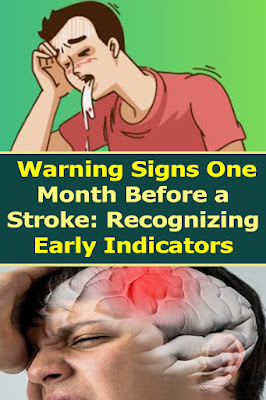Warning Signs One Month Before a Stroke: Recognizing Early Indicators
A stroke is a serious medical condition that occurs when there is a sudden disruption of blood flow to the brain. While strokes can happen without warning, some individuals may experience subtle signs in the month leading up to the event. Recognizing these warning signs can be crucial for seeking medical attention and potentially preventing a stroke. In this article, we will explore the early indicators that may manifest one month before a stroke.
1. Sudden and Unexplained Headaches:
- Individuals may experience persistent and sudden headaches that are different from their usual headaches. These headaches may be more severe and accompanied by other unusual symptoms.
2. Cognitive Changes:
- Changes in cognitive function, such as difficulty concentrating, memory lapses, or confusion, may occur in the month preceding a stroke. These changes can be subtle but should not be ignored.
3. Vision Disturbances:
- Blurred vision, double vision, or sudden visual disturbances may signal impending vascular issues leading to a stroke. Any unexplained changes in vision should be promptly addressed.
4. Facial Weakness or Numbness:
- One-sided facial weakness or numbness, especially if it occurs suddenly or intermittently, can be an early warning sign of a stroke. Paying attention to facial symmetry is important.
5. Difficulty Speaking or Slurred Speech:
- Difficulty in articulating words, slurred speech, or sudden language difficulties may indicate a disruption in blood flow to the brain. Individuals may struggle to communicate effectively.
6. Dizziness or Loss of Balance:
- Feeling dizzy, unsteady, or experiencing a sudden loss of balance may be a warning sign. These symptoms can be precursors to a stroke, particularly if they occur without an obvious cause.
7. Nausea and Vomiting:
- Unexplained nausea and vomiting, especially when not associated with other gastrointestinal issues, may be indicative of impending vascular problems.
8. Fatigue and Weakness:
- Persistent fatigue and weakness, especially if it is more pronounced than usual, can be a subtle sign of reduced blood flow to the brain.
9. Changes in Limb Strength:
- Sudden weakness or numbness in the arms or legs, particularly on one side of the body, may be an early indicator of a stroke. Pay attention to any asymmetry in limb strength or function.
10. Difficulty Swallowing:
- Difficulty in swallowing, also known as dysphagia, may occur in the month leading up to a stroke. This can be a result of changes in blood flow affecting the muscles involved in swallowing.
Conclusion:
Recognizing the warning signs one month before a stroke is crucial for early intervention and prevention. While these symptoms can be subtle, paying attention to changes in cognitive function, vision, speech, and overall well-being is essential. If individuals or their loved ones experience any of these warning signs, seeking immediate medical attention is imperative. Timely intervention can significantly improve outcomes and reduce the impact of a potential stroke. Always consult with healthcare professionals for proper evaluation and guidance if you have concerns about your health or experience any of the mentioned symptoms.
